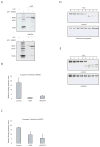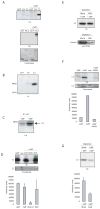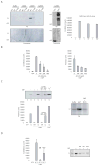Metabolic regulation of oocyte cell death through the CaMKII-mediated phosphorylation of caspase-2
- PMID: 16213215
- PMCID: PMC2788768
- DOI: 10.1016/j.cell.2005.07.032
Metabolic regulation of oocyte cell death through the CaMKII-mediated phosphorylation of caspase-2
Abstract
Vertebrate female reproduction is limited by the oocyte stockpiles acquired during embryonic development. These are gradually depleted over the organism's lifetime through the process of apoptosis. The timer that triggers this cell death is yet to be identified. We used the Xenopus egg/oocyte system to examine the hypothesis that nutrient stores can regulate oocyte viability. We show that pentose-phosphate-pathway generation of NADPH is critical for oocyte survival and that the target of this regulation is caspase-2, previously shown to be required for oocyte death in mice. Pentose-phosphate-pathway-mediated inhibition of cell death was due to the inhibitory phosphorylation of caspase-2 by calcium/calmodulin-dependent protein kinase II (CaMKII). These data suggest that exhaustion of oocyte nutrients, resulting in an inability to generate NADPH, may contribute to ooctye apoptosis. These data also provide unexpected links between oocyte metabolism, CaMKII, and caspase-2.
Figures







Comment in
-
A cellular response to an internal energy crisis.Cell. 2005 Oct 7;123(1):3-5. doi: 10.1016/j.cell.2005.09.015. Cell. 2005. PMID: 16213206 Review.
References
-
- Bagowski CP, Xiong W, Ferrell JE., Jr c-Jun N-terminal kinase activation in Xenopus laevis eggs and embryos. A possible non-genomic role for the JNK signaling pathway. J Biol Chem. 2001;276:1459–1465. - PubMed
-
- Bhuyan AK, Varshney A, Mathew MK. Resting membrane potential as a marker of apoptosis: studies on Xenopus oocytes microinjected with cytochrome c. Cell Death Differ. 2001;8:63–69. - PubMed
-
- Blitzer RD, Connor JH, Brown GP, Wong T, Shenolikar S, Iyengar R, Landau EM. Gating of CaMKII by cAMP-regulated protein phosphatase activity during LTP. Science. 1998;280:1940–1942. - PubMed
-
- Braun T, Dar S, Vorobiov D, Lindenboim L, Dascal N, Stein R. Expression of Bcl-x(S) in Xenopus oocytes induces BH3-dependent and caspase-dependent cytochrome c release and apoptosis. Mol Cancer Res. 2003;1:186–194. - PubMed
Publication types
MeSH terms
Substances
Grants and funding
LinkOut - more resources
Full Text Sources
Other Literature Sources

